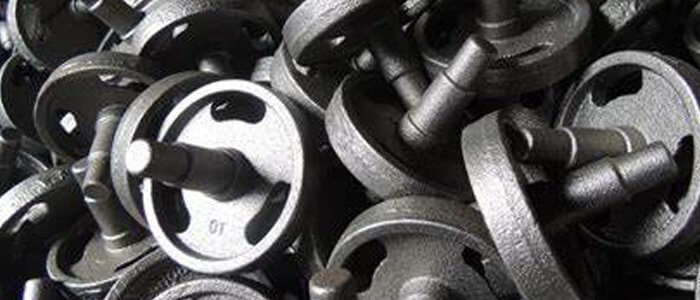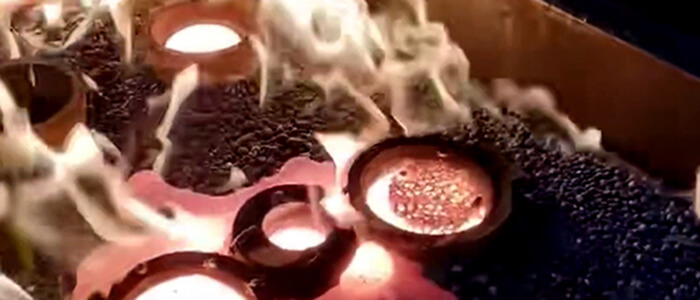The quality of iron castings directly affects their mechanical properties, service life and industrial application reliability. This paper systematically analyzes the key factors affecting the quality of iron castings, including raw material selection, smelting process, casting process design, operating specifications and post-processing process, and proposes corresponding quality control measures to provide theoretical basis and practical guidance for casting companies to optimize production processes and improve the qualified rate of castings.
Keywords: iron castings, quality control, smelting process, casting defects, heat treatment
Introduction
Iron castings are widely used in machinery manufacturing, automobile industry, pipeline systems and other fields, and their quality directly affects the performance of the final product. However, the casting process involves complex physical and chemical changes, and improper control of any link may lead to defects such as pores, shrinkage, and cracks. Therefore, in-depth analysis of the key factors affecting the quality of iron castings and taking targeted measures are of great significance to improving the finished product rate of castings and reducing production costs.
Key factors affecting the quality of iron castings
Raw material quality
The raw materials of iron castings mainly include pig iron, scrap steel, recycled materials and alloying elements (such as silicon, manganese, chromium, etc.). The purity and chemical composition of raw materials directly affect the metallurgical quality of molten iron:
- Excessive sulfur (S) and phosphorus (P) content will increase the brittleness of castings, and excessive sulfur content in ductile iron will also hinder graphite spheroidization.
- Impurity elements in scrap steel (such as Pb, Sn)may cause grain boundary embrittlement and reduce the toughness of castings.
- The quality of coke affects the smelting efficiency. Poor quality coke may cause insufficient temperature of molten iron and increase the risk of slag inclusion.
Control measures: Use a spectrometer to strictly detect the composition of raw materials, preferably low-sulfur and low-phosphorus pig iron, and classify and manage recycled materials.

Melting process control
Melting is the core link that determines the quality of molten iron. The key parameters include:
- Molten iron temperature: Too low temperature (<1350℃) is prone to cold shut and insufficient pouring; too high temperature (>1550℃) increases the solubility of gas (H₂, N₂) and forms subcutaneous pores.
- Chemical composition: Carbon equivalent (CE) and silicon-carbon ratio (Si/C) need to be precisely controlled to ensure that the graphite morphology (flake, spherical or worm-like) meets the requirements.
- Inoculation and spheroidizing treatment (for gray cast iron and ductile iron):
- Insufficient inoculation treatment will lead to coarse graphite and reduce strength;
- Improper addition of spheroidizing agent (such as Mg, Ce) may cause spheroidizing decline and affect the spheroidizing rate.
Control measures: Use fast thermocouples to monitor the temperature of molten iron, use wire feeding method or punching method to optimize the spheroidizing process, and perform metallographic analysis regularly.
Casting process design
Reasonable casting process design can effectively reduce defects such as shrinkage, shrinkage, and slag inclusion:
- Gating system design:
- Improper positioning of gates and risers will lead to insufficient shrinkage compensation and the formation of shrinkage;
- Excessive pouring speed can easily cause turbulence, entrainment of gas and slag inclusion.
- Sand mold quality:
- Insufficient sand mold strength may cause box collapse;
- Poor air permeability may lead to air hole defects;
- Uneven coating may cause sand sticking.
- Cooling rate: Too fast cooling may form white structure (hard and brittle phase), too slow cooling may cause coarse grains, affecting mechanical properties.
Control measures: Use casting simulation software (such as ProCAST, MAGMA) to optimize the pouring system, use highly permeable molding sand, and control the mold preheating temperature.

Operation specifications and process control
- Gating process: Pouring interruption or uneven speed can easily lead to cold shut and flow marks.
- Mold clamping accuracy: Misalignment will lead to dimensional deviation, and the mold positioning must be accurate.
- Cavity cleanliness: Residual sand or paint peeling may form sand inclusion defects.
Control measures: Develop a standardized operating procedure (SOP) and use automated casting equipment to improve stability.
Post-processing and heat treatment
- Cleaning process: Excessive shot blasting may damage the surface, and the shot blasting intensity and time need to be controlled.
- Heat treatment process:
- Gray cast iron is usually annealed to eliminate internal stress;
- Ductile cast iron can adjust the matrix structure (such as pearlite or ferrite) by normalizing or quenching + tempering.
Control measures: Develop a reasonable heat treatment curve according to the material and purpose of the casting to avoid overburning or uneven hardness.
Common casting defects and solutions
| Defect type | Main cause | Solution |
|---|---|---|
| Porosity | Poor permeability of sand mold, high gas content of molten iron | Improve permeability of sand mold and strengthen degassing treatment |
| Shrinkage | Insufficient shrinkage compensation, unreasonable design of pouring riser | Optimize riser design and use exothermic riser |
| Slag inclusion | Incomplete smelting slag removal, poor pouring slag blocking | Use ceramic filter to strengthen slag removal |
| Crack | Cooling too fast, large residual stress | Adjust cooling rate and perform stress relief annealing |
| Poor spheroidization | Insufficient spheroidizing agent, too high sulfur content | Strictly control sulfur content and optimize spheroidization process |
Conclusion
The quality of iron castings is affected by many factors such as raw materials, smelting, casting process, operating specifications and post-processing. Enterprises should improve the quality of castings through the following measures:
- Strictly control raw materials to ensure stable chemical composition;
- Optimize smelting and spheroidization processes to improve the purity of molten iron;
- Use numerical simulation technology to optimize the design of the pouring system;
- Strengthen process monitoring to achieve standardized production;
- Rationally select heat treatment processes to improve the mechanical properties of castings.
Through systematic quality control, the scrap rate can be significantly reduced, and the market competitiveness and reliability of iron castings can be improved.


